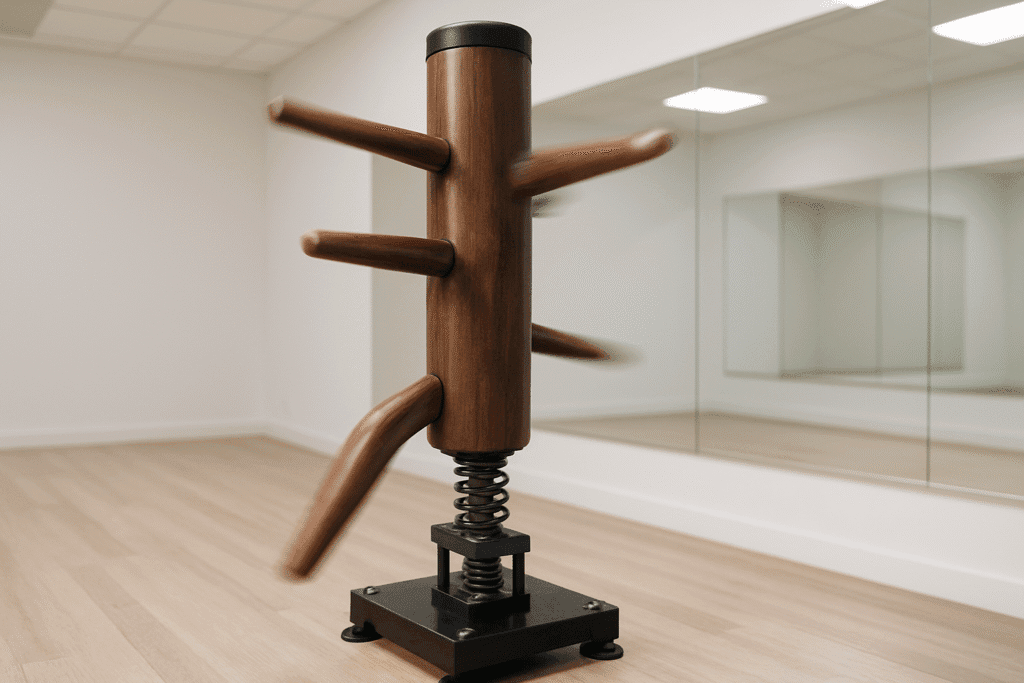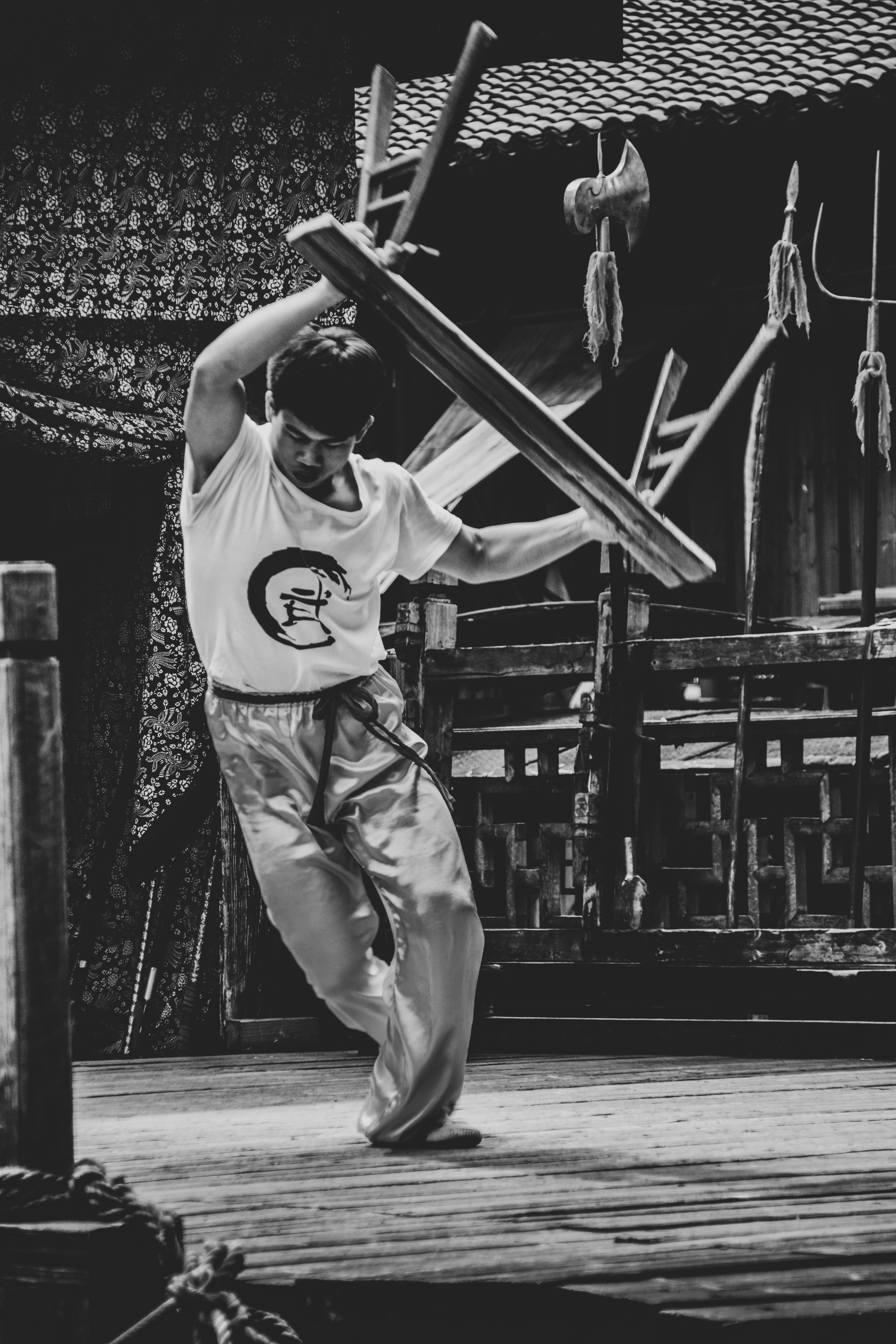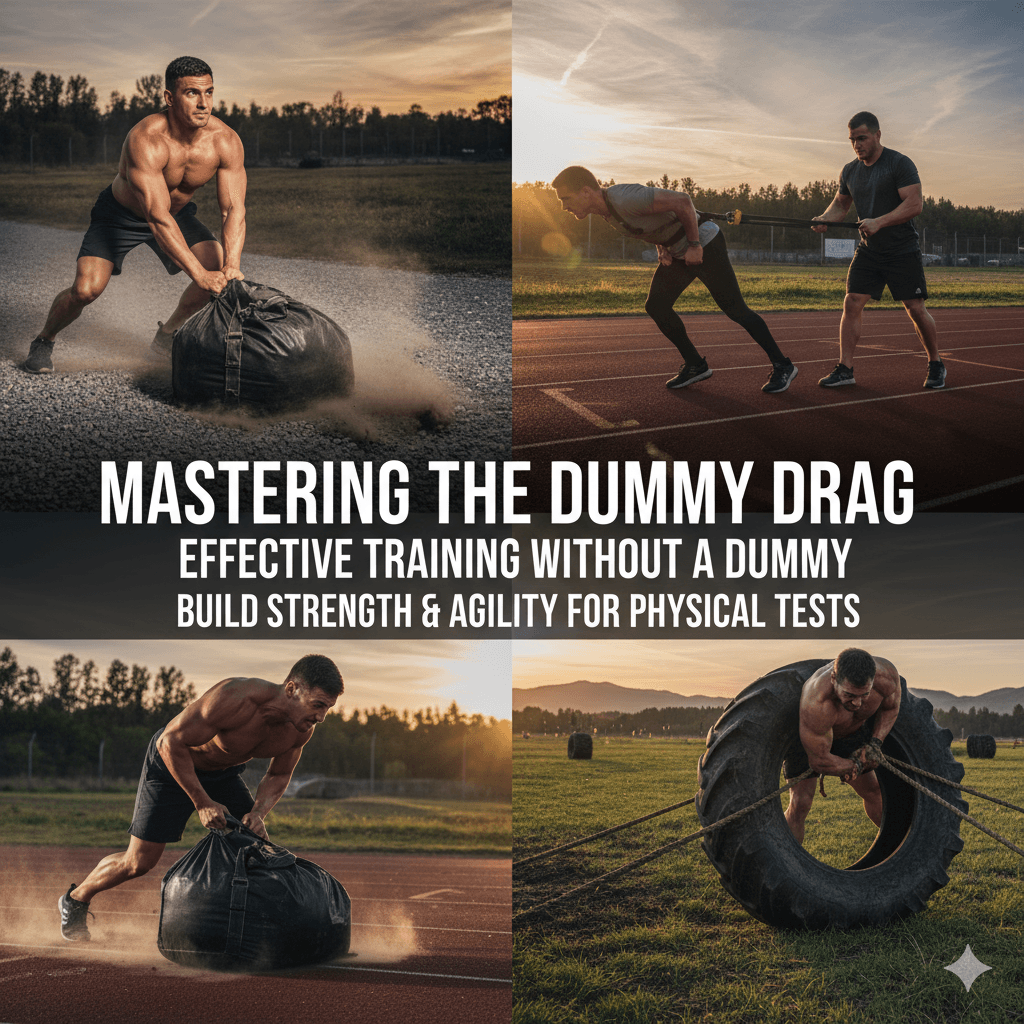Have you ever felt like your martial arts training was missing something?
Perhaps a dynamic element, a partner that pushes back, forcing you to adapt and refine your techniques in real-time?
If you’re a Wing Chun practitioner, you know the value of the traditional wooden dummy, the Mook Yan Jong.
It’s a cornerstone of the art, helping us develop precision, structure, and flow.
But what if I told you there’s an evolution of this classic tool that brings an entirely new level of realism and challenge to your practice?
What Exactly is a Recoil Action Wing Chun Dummy?
At its heart, a recoil action Wing Chun dummy is a modern take on the venerable Mook Yan Jong.
The dummy itself retains the familiar three arms and one leg, strategically placed to simulate an opponent’s limbs and attack angles.
The real innovation, however, lies in its base.
Unlike traditional dummies that are often fixed to a wall or a heavy, static stand, the recoil action dummy is mounted on a specialized stand designed to move and resist your strikes.
This isn’t just about absorbing impact; it’s about actively pushing back.
Imagine striking a target, and instead of it just staying put, it springs back towards you, demanding an immediate response.
That’s the essence of the recoil action.
This dynamic feedback is typically achieved through a system of tension bands, springs, or a cleverly designed swivel base.
These mechanisms allow the dummy to pivot, sway, and then return to its original position, creating a continuous, live-like interaction.
It’s this constant, subtle pressure that makes it such a powerful training tool, mimicking the unpredictable nature of a human opponent.
Why Choose a Recoil Action Dummy?
The Unmatched Training Benefits
The traditional wooden dummy is an invaluable tool,
but the recoil action variant elevates your training by introducing a level of dynamism that static dummies simply can’t offer.
Here’s how it can revolutionize your Wing Chun practice:
1. Dynamic Feedback: The Feeling of a Live Opponent
One of the most significant advantages of the recoil action dummy is its ability to provide dynamic feedback.
When you strike a traditional dummy, it stays put.
While excellent for developing power and precision, it doesn’t prepare you for the give-and-take of a real encounter.
The recoil mechanism changes this entirely.
Each strike you land causes the dummy to move, and then spring back, simulating the resistance and counter-pressure you’d feel from a human opponent.
This constant push-back forces you to maintain your structure, adapt your force, and react to incoming energy, fostering a more realistic training environment.
2. Enhanced Timing and Reflexes: React in Real-Time
With a static dummy, you control the pace. With a recoil dummy, the dummy dictates some of the rhythm.
The immediate return of the dummy after a strike demands quicker reactions and sharper timing.
You learn to flow with the dummy’s movement, striking when the opportunity arises and adjusting your defense as it springs back.
This continuous interaction hones your reflexes, making your responses more instinctive and fluid, crucial skills for any martial artist.
3. Improved Positioning and Footwork: Dance with the Dummy
Wing Chun emphasizes efficient movement and maintaining optimal distance.
A static dummy allows you to plant your feet and strike.
A recoil dummy, however, encourages constant micro-adjustments in your footwork.
As the dummy moves, you’re compelled to shift your stance, pivot, and step to maintain your centerline and ideal striking distance.
This dynamic engagement transforms your footwork from a static exercise into a fluid, responsive dance, essential for controlling space and angles in a real confrontation.
4. Stronger Structure and Rooting: Build an Unshakeable Foundation
The resistance offered by the recoil mechanism is a fantastic way to test and strengthen your wing chun structure.
Every time the dummy springs back, it challenges your balance and rooting.
You learn to absorb and redirect this energy without being knocked off balance, reinforcing the integrity of your stance and body alignment.
This continuous pressure helps you develop a more robust and unshakeable foundation, allowing you to generate power more effectively and withstand incoming force.
5. Superior Centerline Control: Master the Core Principle
Controlling the centerline is a fundamental principle in Wing Chun.
The recoil action dummy, by its very nature, tends to return to its central position after being struck.
This characteristic provides an excellent opportunity to practice maintaining your own centerline while simultaneously disrupting and controlling the dummy’s.
You learn to occupy and dominate the central line, preventing the dummy from regaining its equilibrium and opening up opportunities for continuous attack.
It’s a relentless teacher in the art of centerline theory.
Beyond the Basics: What Makes the Recoil Action Special?
While the core benefits are clear, the recoil action dummy also offers subtle advantages that deepen your understanding and application of Wing Chun principles.
It encourages a softer, more adaptable approach, as brute force against a recoiling object can be counterproductive.
Instead, you learn to use sensitivity and leverage, flowing with the dummy’s energy rather than fighting against it.
This fosters the development of ‘listening energy’ (ting jing), allowing you to feel and respond to the dummy’s movements with greater intuition.
Furthermore, the consistent, repetitive nature of training with a recoil dummy helps in bone and tendon conditioning, gradually strengthening your limbs for impact.
It also allows for solo practice of advanced techniques that would typically require a training partner, making it an invaluable tool for dedicated practitioners looking to push their boundaries.
It’s not just about hitting; it’s about learning to feel and respond.
Recoil Action vs. Traditional Dummy: Which is Right for You?
It’s important to understand that the recoil action dummy isn’t meant to replace the traditional wooden dummy, but rather to complement it.
Both have their unique strengths and contribute differently to a practitioner’s development.
Table
For beginners, starting with a traditional dummy can be beneficial to establish fundamental techniques, angles, and power generation without the added complexity of a moving target.
Once these basics are solid, integrating a recoil action dummy can provide the next level of challenge, pushing you to refine your timing, footwork, and adaptability.
Many advanced practitioners find that using both types of dummies offers the most comprehensive training experience,
allowing them to switch between static precision work and dynamic, responsive drills.
Visualizing the Benefits: Your Path to Mastery
To help you quickly grasp the core advantages of incorporating a recoil action dummy into your training, here’s a visual summary:
Ready to Elevate Your Training?
The recoil action Wing Chun dummy is more than just a piece of equipment;
it’s a training partner that demands your full attention and helps you cultivate a deeper understanding of Wing Chun principles.
It challenges you to move with intention, react with precision, and maintain an unyielding structure against a dynamic force.
Whether you’re looking to sharpen your reflexes, improve your footwork, or simply add a new dimension to your solo practice,
the recoil action dummy offers a unique and highly effective path to mastery.
So, if you’re serious about pushing your Wing Chun skills to the next level, consider integrating a recoil action dummy into your training regimen.
It’s an investment in your martial arts journey that promises significant returns in skill, understanding, and confidence.
Embrace the challenge, and unlock your true potential!




